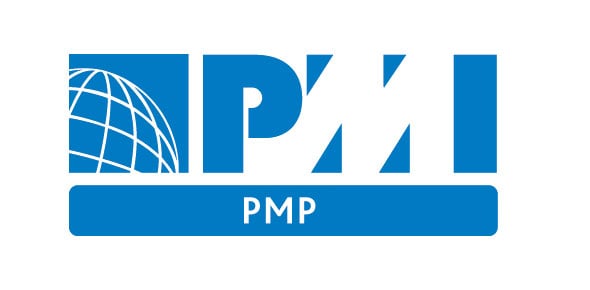Dewp - PMP Module 2 - Mini Exam
-
Question 8: Which of the following is the correct statement regarding Crashing and Fast-Tracking?
-
Crashing removes Mandatory Dependencies; Fast-Tracking removes Discretionary dependencies
-
Crashing removes Discretionary Dependencies; Fast-Tracking removes Mandatory Dependencies.
-
Crashing requires performing activities in parallel; Fast-Tracking requires addition of resources.
-
Crashing requires addition of resources; Fast-Tracking requires performing activities in parallel.
-
DEWP - PMP Module 2 - Mini Exam assesses understanding of project management principles, focusing on WBS, schedule dependencies, decomposition, and requirements gathering. It is essential for learners aiming to excel in project management.

Quiz Preview
- 2.
Question 12: Jim has just completed defining his project activities. The project Network Diagram has been created and the necessary resources have been assigned to the project tasks. Jim wants to make sure that none of the resources is overloaded as a result of these task assignments. Which of the following techniques will allow Jim to adjust the project schedule so that none of the resources are overloaded?
-
Crashing
-
Fast-Tracking
-
Critical Path Method
-
Resource Leveling
Correct Answer
A. Resource LevelingExplanation
Correct answer is D
Explanation: Resource Leveling is used when shared resources are only available at certain times or are available in limited quantities. Resource leveling is also used when resources have been over-allocated or overloaded.
Reference: PMBOK Guide 5th Edition, page 179Rate this question:
-
- 3.
Question 2: A schedule has two activities, i.e., “Pour Concrete” and “Cure Concrete”. Once laid, concrete must be cured with water to attain its designed strength. The duration of the curing depends upon the concrete mix and the desired strength of the concrete. What is the type of dependency between these two activities?
-
Discretionary Dependency
-
Mandatory Dependency
-
External Dependency
-
There is no dependency between the activities
Correct Answer
A. Mandatory DependencyExplanation
Correct answer is B
Explanation: If concrete is not cured, it will not gain it's desired strength levels. This is an example of Mandatory Dependency between two activities.
Reference: PMBOK Guide 5th Edition, page 157Rate this question:
-
- 4.
Question 3: The breakdown of the project deliverables into smaller components is called?
-
Work Breakdown Structure
-
Decomposition
-
Progressive Elaboration
-
Work Packages
Correct Answer
A. DecompositionExplanation
Correct answer is B
Explanation: The question is referring to the activity that breaks down project deliverables into smaller components, i.e., the work packages. This activity is called Decomposition, which is a tool and technique of the Create WBS process.
Reference: PMBOK Guide 5th Edition, page 128Rate this question:
-
- 5.
Question 5: Mary is assigned to carry out a manufacturing process improvement project. The process to be improved involves a number of departments, and soliciting everyone’s input is essential for the success of the project. Mary wants to define the project requirements and thinks that carrying out individual one-on-one interviews with the key cross-functional stakeholders will be too time-consuming. She decides to invite the key stakeholders to a meeting where they can all share their ideas and expectations. This would not only save time for Mary, but also result in better requirements definitions for her project. Which requirements gathering technique is Mary planning to use?
-
Focus Group
-
Facilitated Workshop
-
Nominal Group Technique
-
Delphi Technique
Correct Answer
A. Facilitated WorkshopExplanation
Correct answer is B
Explanation: Mary is planning to invite key stakeholders and not the subject matter experts. Therefore it isn't a Focus Group because that requires the presence of pre-qualified stakeholders and subject matter experts to help ‘understand’ the project requirements. What Mary is doing is an example of a Facilitated Workshop where the key stakeholders, who indirectly own the project, ‘define’ the project requirements. There is a very subtle difference between the two techniques. During Focus Group meetings, the idea is to obtain subject matter experts’ opinions on a product’s requirements and other details. A Facilitated Workshop is used to collect the project’s requirements, based on the expectations of the key stakeholders.
Reference: PMBOK Guide 5th Edition, page 114Rate this question:
-
- 6.
Question 1: “A project WBS must represent all product and project work, including the project management work”. This is a good project management practice that should be followed. This practice is referred to as which of the following in the PMBOK Guide?
-
100% Rule
-
80/20 Rule
-
WBS Rule
-
Create WBS Rule of Thumb
Correct Answer
A. 100% RuleExplanation
Correct answer is A
Explanation: In the PMBOK Guide, this is referred to as the '100% rule', which means that a WBS must include 100% of the work to be performed on the project, including all product and project work.
Reference: PMBOK Guide 5th Edition, page 131Rate this question:
-
- 7.
Question 4: Julie’s project is falling behind schedule. Upper management is willing to inject additional funds into the project in order to complete the project on time. However, many project activities have Discretionary Dependencies that cannot be removed. Which of the following techniques can help Julie complete the project on time in this scenario?
-
Progressive Elaboration
-
Reserve Analysis
-
Fast-Tracking
-
Crashing
Correct Answer
A. CrashingExplanation
Correct answer is D
Explanation: Julie needs to apply a schedule compression technique. Progressive elaboration and reserve analysis won't help us. Fast-Tracking cannot be applied because the scenario mentions that some Discretionary Dependencies cannot be removed. The scenario doesn't tell us the reason why they cannot be removed, so we simply have to take it at face value.
Since these dependencies cannot be removed it means that these activities cannot be performed in parallel (i.e. fast tracked), which means that crashing is the only applicable technique in this scenario. A further hint that crashing is the correct answer is the statement that "upper management is willing to inject additional funds into the project", which means that we have the necessary budget for adding more resources (i.e. crashing) the activities.
Reference: PMBOK Guide 5th Edition, pages 181Rate this question:
-
- 8.
Question 9: Julie is managing a software development project. The project is divided into multiple phases and the completion of each phase requires a customer inspection and final approval. The first project phase has just been completed and the project team was given the green light after conducting intensive quality control checks, as outlined in the Quality Management Plan. However, during the inspection, the customer rejected the deliverable. What should Julie do next?
-
Issue a change request
-
Negotiate with the customer to approve the deliverable
-
Escalate the issue to the project sponsor
-
Ask the project team to make the required changes immediately
Correct Answer
A. Issue a change requestExplanation
Correct answer is A
Explanation: The rejection may be based on found defects or changes in customer requirements. No matter what the reason is, changes have to be made because the project customer has asked for them. Therefore, a proper change control process needs to be followed and the next logical action for Julie is to issue a change request.
Reference: PMBOK Guide 5th Edition, page 136Rate this question:
-
- 9.
Question 6: Neil is managing a next generation car design project. A high-level project WBS has been created but the project activities cannot be determined because the client’s exact requirements are not stated. The client wants Neil to have enough flexibility in his schedule so that he may easily add or remove requirements. Which of the following techniques should Neil use for the decomposition of his project WBS components into project activities?
-
Templates
-
Rolling Wave Planning
-
Fast tracking
-
Applying Leads and Lags
Correct Answer
A. Rolling Wave PlanningExplanation
Correct answer is B
Explanation: Neil should use Progressive Elaboration in order to decompose his project's WBS. Rolling Wave Planning is the technique that complements Progressive Elaboration during the Define Activities process.
Reference: PMBOK Guide 5th Edition, page 152Rate this question:
-
- 10.
Question 11: A project's WBS has been decomposed into activities. However, the project activities are still very complex and the activity resources cannot be estimated with a reasonable degree of confidence. Which of the following estimating tools and techniques can be used in this case that would produce the best results?
-
Expert Judgment
-
Bottom-Up Estimating
-
Alternative Analysis
-
Published Estimating Data
Correct Answer
A. Bottom-Up EstimatingExplanation
Correct answer is B
Explanation: Think about which of the answer choices enables the highest degree of activity decomposition. The resources cannot be estimated because the activities are complex. Therefore, the best way is to further decompose the activities into smaller parts to develop a better estimate. This technique is called Bottom-Up Estimating.
Using the Bottom-up Estimating technique means decomposing a component into smaller components, estimating the smaller components and rolling up the totals. For the Estimate Activities Resources process, this technique is applied when an activity cannot be estimated with a reasonable degree of confidence. In such cases, the activity can be sub-divided into smaller components so that the resource needs are better estimated.
Reference: PMBOK Guide 5th Edition, page 164Rate this question:
-
- 11.
Question 10: Which of the following techniques is associated with the Program Evaluation and Review Technique?
-
Parametric Estimating
-
Analogous Estimating
-
Three-Point Estimating
-
Top-down Estimating
Correct Answer
A. Three-Point EstimatingExplanation
Correct answer is C
Explanation: The Program Evaluation and Review Technique is also called PERT or Three-Point Estimating.
Reference: PMBOK Guide 5th Edition, page 170Rate this question:
-
- 12.
Question 7: If changes to the project scope are requested by the customer during the project execution, the changes and their impact must be analyzed during which process?
-
Define Scope
-
Integrated Change Control
-
Validate Scope
-
Control Scope
Correct Answer
A. Control ScopeExplanation
Correct answer is D
Explanation: The answer should be a monitoring and controlling process. If a change request regarding changes in project scope is requested after the approval of the Scope Baseline, the change request must be analyzed during the Control Scope process before forwarding it to the Integrated Change Control process for approval.
Reference: PMBOK Guide 5th Edition, page 136Rate this question:
-
Quiz Review Timeline (Updated): Jul 22, 2023 +
Our quizzes are rigorously reviewed, monitored and continuously updated by our expert board to maintain accuracy, relevance, and timeliness.
-
Current Version
-
Jul 22, 2023Quiz Edited by
ProProfs Editorial Team -
Mar 03, 2015Quiz Created by
Lingo_Bingo
100 PMP Assessement Test
The '100 PMP Assessment Test' evaluates knowledge essential for effective project management, focusing on stakeholder engagement, scope definition, and process optimization. It is...
Questions:
100 |
Attempts:
159 |
Last updated:
Mar 13, 2023
|
|
PMI PMP Project Management
With core components, objectives and constraints project management is vital in solving a particular task. It determines the success of every field from health to transport to...
Questions:
10 |
Attempts:
406 |
Last updated:
Mar 22, 2023
|
Project Management Assessment Test
The Project Management Professional (PMP) is one of the most important and globally-recognized certification for not only project managers, but people in other careers as well.
Questions:
10 |
Attempts:
202 |
Last updated:
Mar 20, 2023
|
200 PMP Exam Practice Questions (V1) - PMI PMBOK Exam Prep (4th Edition)
Author/Owner: Sherry Hohmann
PMP Exam Practice Questions (Ch 1-3) : PMI PMBOK Exam Prep
(4th Edition)
Questions:
23 |
Attempts:
336 |
Last updated:
Mar 21, 2023
|
PMP
This PMP quiz evaluates knowledge on project management processes, focusing on roles, responsibilities, and planning tools. It assesses understanding of scope management, resource...
Questions:
30 |
Attempts:
348 |
Last updated:
Dec 14, 2023
|
DEWP - PMP Module 3
DEWP - PMP Module 3 assesses key project management skills through scenarios in team acquisition, conflict resolution, and process control. It tests practical application of tools...
Questions:
12 |
Attempts:
195 |
Last updated:
Mar 20, 2023
|
 Back to top
Back to top








